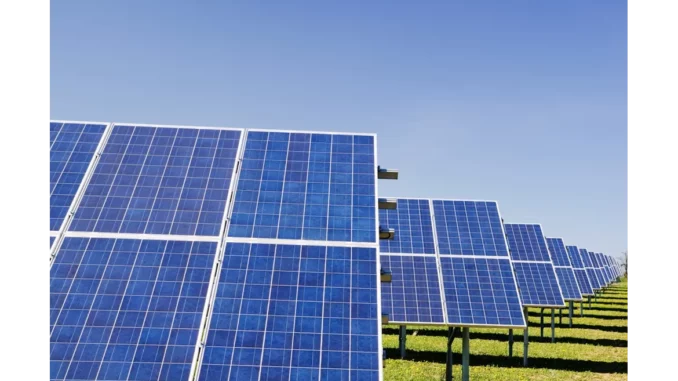
A stroll through the tree-lined streets of Kent led me to a well-maintained block of flats, shimmering under the midday sun. I was meeting with Angela Miller, an experienced Standard Assessment Procedure (SAP) assessor, to discuss the intricacies of SAP 10.2 and the evolving landscape of energy efficiency in new residential developments. Angela has been in the field for over a decade, and her insights into the recently introduced SAP 10.2 requirements were invaluable.
Focus360 Energy offers SAP Calculations services. Find out more.
“Generating an Energy Performance Certificate (EPC) is no small feat,” Angela began as we settled into a modest but sunlit sitting room. “An EPC score essentially assesses how much energy a property uses and how dependent it is on grid energy. This score is crucial for measuring a building’s energy performance, sustainability, and the estimated costs of running it.”
She elaborated on the role of SAP assessments in determining EPC ratings. “To generate an EPC, a SAP assessor conducts a detailed evaluation of the home, examining various factors such as the type of heating, insulation, glazing, and the materials used in the building’s construction. The SAP score, which ranges from 0 to 100, directly influences the EPC rating, categorising homes from A (most energy efficient) to G (least energy efficient).”
Angela’s role as a SAP assessor involves meticulous attention to detail. “One key component in a SAP assessment is the source of the home’s energy. Homes that utilise renewable energy sources, such as rooftop solar PV systems, often achieve higher SAP scores due to their reduced reliance on grid energy. This makes solar PV a powerful tool for improving both SAP scores and EPC ratings.”
The conversation naturally transitioned to the shift from SAP 2012 to SAP 10.2. Angela’s expertise became even more evident as she outlined the changes. “Under SAP 2012, apartment buildings could install a large rooftop PV system connected to the landlord supply, powering communal areas like hallways and parking gates. This setup allowed every flat in the building to benefit from an uplift in their SAP scores and EPC ratings. However, the energy generated primarily served the landlord’s needs, which didn’t reduce individual flats’ reliance on grid energy or lower their electricity bills.”
Recognising this flaw, the government introduced SAP 10.2. “For flats to receive a SAP score uplift under SAP 10.2, the solar PV must be directly connected to each unit, bypassing the landlord meter,” Angela explained. “This direct connection ensures that solar energy is utilised within the flat, reducing its grid dependency and lowering energy costs.”
However, Angela didn’t shy away from discussing the challenges posed by SAP 10.2 compliance. “The direct connection requirement enhances energy efficiency but presents significant challenges for housing associations, property developers, homeowners, and SAP assessors. Installing separate solar PV systems for each flat in a building is complex, costly, and impractical. This method requires extensive DC cabling, the installation of inverters in each flat, and careful allocation of panels based on roof orientation.”
Fortunately, Angela shared an innovative solution that has been making waves in the industry—SolShare. “SolShare is the world’s only technology capable of directly connecting multiple flats to a single rooftop PV array,” she said with a hint of excitement. “It streamlines the installation process, reducing complexity and cost. By using SolShare, solar energy can be efficiently distributed to each flat, ensuring maximum SAP score uplift and optimal EPC ratings for all units within the building.”
Angela recounted a recent project where SolShare made a significant impact. “Modular house builder TopHat faced a challenge in achieving EPC B ratings for all flats in one of their residential developments, despite implementing various energy-saving measures. The limitations in specifying energy contributions and the costs of additional improvements made it difficult. However, with SolShare, they were able to allocate the specific kWp associated to each flat, adding the necessary SAP points to bring them all from a varying EPC C to a level EPC B.”
Angela’s experience highlighted the dual benefits of SolShare. “SolShare enables solar energy to be shared across all individual dwellings as well as common areas within a building. By distributing the solar energy to each apartment, the overall carbon emissions from the building are reduced. This reduction in emissions positively impacts the Dwelling Emission Rate (DER), which is a crucial factor in complying with Part L of the building regulations.”
Moreover, SolShare’s impact on running costs cannot be overstated. “Since SolShare allocates solar energy to individual flats, the energy costs for each apartment are reduced. This reduction in energy costs improves the SAP rating because lower running costs contribute to a higher SAP score.”
As our conversation drew to a close, Angela’s dedication to her work was evident. “The introduction of SAP 10.2 has brought about significant changes in how energy efficiency is assessed in apartment buildings. While these changes present new challenges, solutions like SolShare offer a unique and effective way to navigate these complexities. By simplifying the installation process, reducing costs, and optimising energy distribution, SolShare enables SAP assessors to achieve the highest possible EPC ratings and ensures that apartment buildings meet the new energy efficiency standards in the most straightforward and cost-effective way.”
Walking away from our meeting, I couldn’t help but feel enlightened by Angela’s insights. Her expertise shed light on the evolving landscape of energy efficiency and the pivotal role SAP assessments play in achieving sustainable living environments. As the world continues to prioritise energy efficiency, professionals like Angela are at the forefront, driving change and innovation in the industry.
Tobiasz Karcz


Be the first to comment